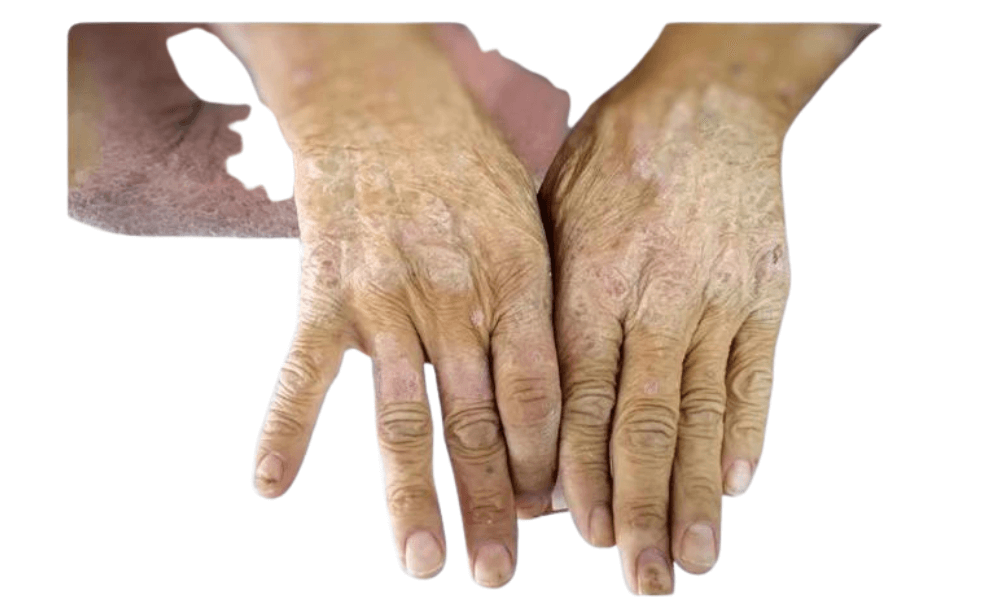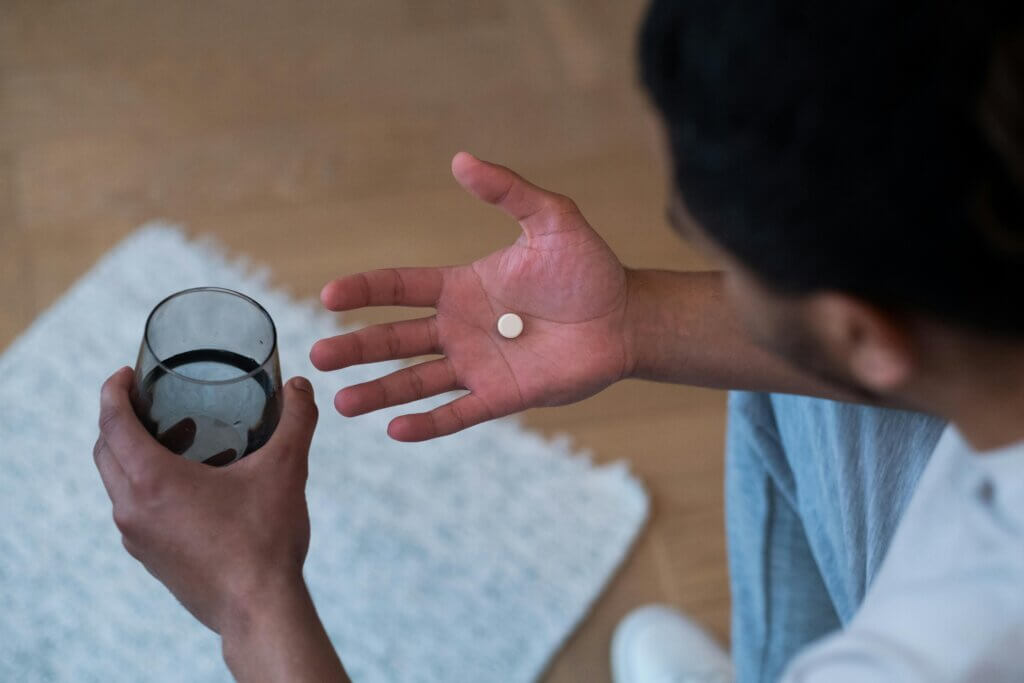Today we will talk about an important topic – scleroderma self-care. First, let’s understand what scleroderma is. Scleroderma is an autoimmune disease, in which the body tissues become hard. It can affect different parts of the body, such as skin, kidney, heart and other organs.
You will find every news or information related to this here, so get ready to take care of yourself in your scleroderma journey.
Now coming to the importance of self-care for scleroderma. Self-care is very important in the treatment of scleroderma. Because this disease cannot be cured forever, it is important that you take proper care of your body and mind.
We will talk about this topic in more depth later, so stay tuned. Come on, let’s get started.
Understanding Scleroderma

Scleroderma is a special type of autoimmune disease in which some parts of the body become stiff. Due to these organs becoming rigid, their flexibility reduces. The main reason for this is the body’s own immune system working incorrectly.
Normally, the immune system helps our body fight diseases, but in autoimmune diseases it starts damaging the body’s own organs.
There are many types of scleroderma, the most prominent of which are Localized Scleroderma and Systemic Sclerosis. In localized scleroderma, the disease usually affects only the skin. It especially affects children.
The second type, Systemic Sclerosis, can affect different parts of the body, such as the skin, kidneys, heart, and other organs. It mainly has two types – Limited Scleroderma and Diffuse Scleroderma.
Now let us come to the causes and risk factors of scleroderma. The causes of scleroderma are not completely clear yet, but there are some major factors that may be associated with it.
Genetic factors, i.e. hereditary reasons, are a big reason. If someone in a family has scleroderma, other members of that family also have an increased risk of getting this disease.
Apart from this, environmental factors can also play a big role in this. Some research has suggested that some chemicals or infections can also be the cause of scleroderma.
Another important point is gender and age. Women are at greater risk of developing scleroderma, although the disease can affect people of all ages. It is seen more in people between 30 and 50 years.
Understanding all these causes and risk factors and changing your lifestyle accordingly can be helpful in reducing the effects of scleroderma.
Therefore, as soon as you think that you or any of your family members are showing symptoms of scleroderma, immediately contact a doctor and get checked. With timely early treatment and understanding, you can improve your health. (scleroderma self-care)
Symptoms and Diagnosis

Both the symptoms and diagnosis of scleroderma are important so that early detection and treatment can begin. Let us understand both these topics in depth. Scleroderma symptoms can be varied and vary from person to person. Some important symptoms are as follows:
- Hardness in the skin: This is the most prominent symptom. The skin hardens and becomes thick and rigid instead of a normal, flexible skin.
- Raynaud’s phenomenon: This symptom is swelling and discoloration of the fingernails and toenails when they are exposed to cold or hyperactive to moisture.
- Digestive system symptoms: In some types of scleroderma, a person may have trouble digesting food, such as acid reflux, gas, or constipation.
- Heart symptoms: Some people with scleroderma also have heart problems, such as arrhythmias or problems with heart development.
- Joint pain: In some types of scleroderma, a person may experience joint pain and stiffness, which may be symptoms similar to rheumatoid arthritis.
Diagnosing scleroderma can be done in several different ways. The diagnosis is tailored to the doctor and is based on the person’s symptoms and medical history. Some major methods include:
- Physical Examination: The doctor looks at different parts of the body and looks for symptoms like skin hardness, Raynaud’s phenomenon.
- Blood test: Blood tests can detect autoimmune markers and other problems.
- Skin biopsy: A small sample is removed from the skin and examined through a microscope.
- Imaging tests: Changes inside the body can be detected with the help of imaging tests like X-ray, MRI, and CT scans.
- Pulmonary function tests: These tests are important for those who show signs of lung involvement with the type of scleroderma.
Through all these tests and procedures, the doctor can make the correct diagnosis of scleroderma and guide the right treatment. Therefore, if you or anyone else is experiencing symptoms of scleroderma, contact a doctor immediately and get a proper diagnosis. (scleroderma self-care)
You might like to read more on: Scleroderma – Diagnosis and treatment
Current Impact of Scleroderma in the US (as of January 2022):
- An estimated 300,000 people in the United States have scleroderma [Source: Source to be added later].
- Women are diagnosed roughly three times more often than men https://scleroderma.org/].
- The peak onset occurs between the ages of 30 and 50.
The Role of Scleroderma Self-Care.

Self-care is an important part of treating scleroderma. Self-care means taking care of your body and mind, and taking necessary steps to improve your health.
Scleroderma is a chronic condition, which means it cannot be cured forever, but through self-care you can make your life happier and healthier.
The importance of self-care takes many forms in reducing the effects of scleroderma. First, self-care can make you physically and mentally stronger.
By including exercise and nutritious diet in your daily routine, you can make your body stronger, which helps in reducing the symptoms of scleroderma and increasing the body’s immunity.
Secondly, self-care helps you understand and control your symptoms. Scleroderma symptoms vary and may be different for each person. Through self-care, you can recognize your symptoms and find ways to control them.
Taking responsibility for your health and paying attention to it can make you powerful. When you are responsible for your health, you have more control over your life and are not left unable to achieve your goals.
When living with scleroderma, it is important to take control of your health and be responsible for self-care. (scleroderma self-care)
Therefore, by incorporating self-care into your life, you can reduce the effects of your scleroderma and prepare to live a happier and healthier life.
You must have confidence in the diagnosis, medications, and treatments necessary to take care of your body and mind, as well as the process of self-care.
Creating a Self-Care Plan

To minimize the effects of your scleroderma, it is important to create your own self-care plan. This plan will help you improve your health and make your life easier. Let’s see how you can create an effective self-care plan.
First and foremost, you should consult your healthcare professionals. Meet with your doctor or healthcare team to talk about your condition and your disease.
It is very important to give them accurate information about your symptoms and problems. Their advice and instructions are an evaluation of any self-care plan you may have.
The second important step is to recognize your personal triggers and symptoms. Every person’s body is different and the effects of scleroderma can vary.
Some people have more trouble with cold or stress, while others do not like certain food items. By knowing yourself well, you can understand and address your body’s signs and signals. (scleroderma self-care)
Finally, set realistic goals. Often we expect too much from ourselves, which can lower our morale. Therefore, set small and realistic goals that can be easily achieved in your daily routine.
For example, getting a little exercise every day, eating healthy food, or learning one new thing every day. These small successes will keep you motivated and help you move towards your bigger goals.
Creating a good self-care plan will help you minimize the effects of your scleroderma and help you live your life to the fullest. So, meet with your healthcare professionals, identify your triggers, and set realistic goals.
You might like to read our article on- How self care improves mental health
Physical Self-Care Strategies

Physical self-care strategies are important to reduce the effects of your scleroderma and improve your health. These strategies help you through skin, exercise, and diet. Let us understand these strategies in depth. (scleroderma self-care)
Eating a healthy diet is important for people with scleroderma. Certain changes in your diet can help improve your health. Some nutrition tips that may help you:
Stay adequately hydrated. Drink at least 8-10 glasses of water daily.
Eat antioxidant-rich foods, such as colorful fruits and vegetables. These reduce free radicals in your body and make the skin healthy.
Eat foods rich in omega-3 fatty acids, such as fish, flaxseeds and walnuts. These provide moisture to your skin and reduce inflammation.
Avoid sugar, processed foods and foods made from refined flour. Consuming these things can worsen your condition.
It is also very important to include exercise and movement in your daily life. Your body’s flexibility and stamina can be increased by exercise. Some exercise and movement tips:
Get at least 150 minutes of moderate-intensity exercise a week, such as brisk walking, cycling, or swimming.
Do stretching exercises, which increase the flexibility of your body and reduce stiffness.
Always keep in mind that your exercise and movement should be normal. Avoid exerting yourself too much as it may worsen your condition.
Taking care of the skin is very important for individuals with scleroderma. In this disease the skin can become hard and dry. So, some skin care tips that can help you:
Use moisturizers that provide moisture. These provide softness to your skin and reduce dryness.
To keep the skin safe, do not use harsh soaps and cleansers.
Always use sunscreen to protect yourself from the sun, especially when you go outside.
By incorporating all of these physical self-care strategies into your everyday life, you can reduce the effects of your scleroderma and improve your health. Keep in mind, every person is different, so adopt these strategies only after consulting your doctor.
Emotional and Mental Well-Being

It is extremely important for individuals with scleroderma to take care of their physical health as well as their mental and emotional health.
Struggling with this disease can lead to many mental challenges and confronting suppressed emotions. Therefore, taking care of your mental and emotional health is as important as your physical health.
Battling with scleroderma can force many people to face anxiety and sadness. Mental problems like anxiety and depression are often associated with it. Some strategies to meet these challenges are:
Take recourse to conversation and personal counseling. Talking to an expert can help you understand and resolve your concerns and sadness.
Include techniques like yoga and meditation in your daily routine. These will help keep you calm and balanced.
Share your emotional state with your friends and family. Their company can provide you with understanding and support.
Having a strong and supportive support system is also very important for individuals struggling with scleroderma. This includes social, family, and professional support. Some ways you can build your support system:
Talk openly with your family and friends and explain your situation to them. Their company can provide you with understanding and support.
Join scleroderma support groups and online communities. Here you will meet other people who are facing this problem and you will get a chance to learn and understand from them.
Schedule regular appointments with your doctor and healthcare team and talk to them about your mental condition. Their support can provide you with wisdom and advice. (scleroderma self-care)
Managing Medications and Treatments

Understanding and using medications and treatments properly is important for people with scleroderma. Choosing the right medicines and treatments, using them regularly, and finding solutions to their problems helps improve their health. Let us understand all these issues in depth.
It is very important to understand medicines properly and use them regularly. Some important points you should understand:
It is very important to use medicines regularly. Follow the instructions given by the doctor and take medicines at the right time. If you don’t understand a medicine, keep asking your doctor and get their help.
Some medicines can have side effects, which vary from person to person. It is important to understand the side effects of medications and talk to your doctor about them.
There are some common side effects such as dizziness, sleepiness, or digestive problems. If you experience any side effects, contact your doctor immediately.
It is also very important to monitor your symptoms and their changes. With this you can understand the effect of your disease and take action at the right time. Some ways you can monitor your symptoms:
Keep a symptom diary and write down your symptoms daily. With this, you will be aware of the changes in your disease in time.
Keep visiting your doctor regularly and keep him updated about your condition and problems. Follow the doctor’s instructions and follow his advice.
Apart from medicines, many people also resort to alternative therapies to improve their condition. (scleroderma self-care)
Practical Tips for Daily Living
People with scleroderma should take help of some practical tips in living everyday life. These tips help in making their daily routine easy and healthy. Let us understand these issues in depth.
There are many adaptive tools and devices available to make life easier that can be extremely useful for individuals with scleroderma. Some of the key tools and devices are:
- Jar Openers: Jar openers make it easy to open any tight jar.
- Ergonomic Kitchen Tools: Ergonomic kitchen tools such as easy-grip utensils, long-handle spatulas, and easy-to-use can openers make your kitchen tasks easier.
- Reacher Grabbers: Reacher grabbers allow you to pick up any small item without bending, which increases your flexibility.
There are some tips to help make your home accessible that can make your everyday life easier:
- Install Handrails and Grab Bars: Handrails and grab bars can be installed in various places in the home, such as the bathroom and kitchen, to provide you with balance and support.
- Eliminate hazards: Remove any hazards in the home, such as loose carpets, cords, or sagging floors, to improve your mobility.
- Arrange furniture wisely: Arrange the furniture in such a way that you do not face any problem in reaching different parts of the house easily.
Managing work and social life with scleroderma can be difficult, but some tips can help:
- Communicate with your employer: Talk openly with your employer about your situation and explain your limitations. Talk about flexible work hours or remote work options.
- Join Support Groups: Join scleroderma support groups or online communities where you can meet people like you and share your experience.
- Plan social events wisely: Plan the timings of social events or outings wisely and proceed as per your stamina and comfort level.
By adopting all of these practical tips and strategies, you can make your everyday life easier and reduce the effects of scleroderma.
Keep in mind that every person is different, so consult your doctor or healthcare professional before addressing these issues. (scleroderma self-care)
Preventing Complications

People with Scleroderma need to follow some important precautions and practices to avoid complications. Some key points to pay attention to:
- Healthy Lifestyle: It is important to maintain a healthy lifestyle such as eating healthy food, exercising regularly and using relaxation techniques to reduce stress.
- Avoiding Triggers: It is important to identify your personal triggers and avoid them. Cold, stress, or certain foods can worsen your symptoms, so stay away from these triggers.
- Visit your doctor regularly: It is important to visit your doctor regularly and update him regularly about your health.
- Monitoring symptoms: It is important to monitor your symptoms regularly and keep track of their changes. If any new symptoms or complications are felt, consult your doctor immediately.
- Regular check-ups: Regular check-ups and monitoring helps to track your health and identify any problems timely.
By following all these precautions and practices, you can reduce the effects of your scleroderma and avoid complications. It is also very important to understand when and how to see your doctor.
Keep in mind that every person is different, so consult your doctor or healthcare professional before addressing these issues. (scleroderma self-care)
Conclusion
Understanding the effects of Scleroderma and finding the right solution can be difficult, but with the right information and understanding, it is possible to deal with it.
Your understanding and support, as well as the right treatment and self-care practices, can keep you healthy and happy in your everyday life.
Remember that every person is different and so everyone’s approach may be different. Keep in touch with your doctor regularly and follow his advice and instructions.
Also, keep listening to your body and mind and monitoring your symptoms. With social and family support, you can reduce the effects of your scleroderma and live a happy life.(scleroderma self-care)
I hope you have liked the information we have shared in our article, to know more about this you can read our other article too.
Frequently Asked Questions
1. What is Scleroderma?
Scleroderma is an autoimmune disorder in which the body’s tissues become hard and thick. This affects the skin, blood vessels, and internal organs.
2. What are the main symptoms of Scleroderma?
The main symptoms of scleroderma include the skin becoming hard and thick, stiffness of the fingers, and effects on internal organs.
3. What is the cause of Scleroderma?
The cause of Scleroderma is still not fully understood by the society. But, autoimmune response and genetic factors play a role in it.
4. Can Scleroderma be completely cured?
Scleroderma cannot be completely cured. But, millions can be controlled through treatment and self-care.
5. What is the treatment for Scleroderma?
Scleroderma is treated to control symptoms and prevent complications. This treatment includes medications, physical therapy, and lifestyle changes.
6. What kind of diet should a Scleroderma patient take?
Scleroderma patients should eat healthy foods, including fruits, vegetables, whole grains and lean proteins. It is important to avoid junk food and processed food.
7. Is Scleroderma genetic?
Yes, genetic factors play a role in Scleroderma, but they are not the sole cause. Environmental factors and autoimmune response are also involved.
8. Can Scleroderma happen to children also?
Yes, children can also get Scleroderma, but it occurs mostly in adults. The incidence rate of Scleroderma is lower in children, but they can also be affected.
9. Should a Scleroderma patient do exercise?
Yes, Scleroderma patients should do light exercise, such as walking, yoga, and stretching exercises. But, they should consult their doctor before starting.